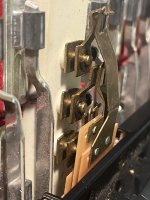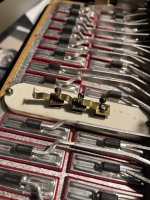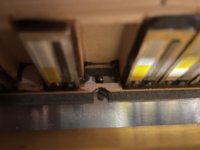Exactly so (including the YMMV).
Removing the aluminum plate with the tiny screws is straightforward. Lifting up the slides to clean them is simple- they must go back exactly as removed re: orientation-
BUT-
-Beware, the slides are really easy to bend and a real pain to render sufficiently flat to work smoothly again once bent- be careful in handling.
-The screws that hold the plate down are not tiny- they're teeny, weeny, tiny and made out of brass (usually) to boot. If you drop them somehow they are really challenging to locate- and the tried and true "sweep the area with a powerful magnet" trick won't work because they are non-magnetic and replacements will not be found at your corner hardware store.



